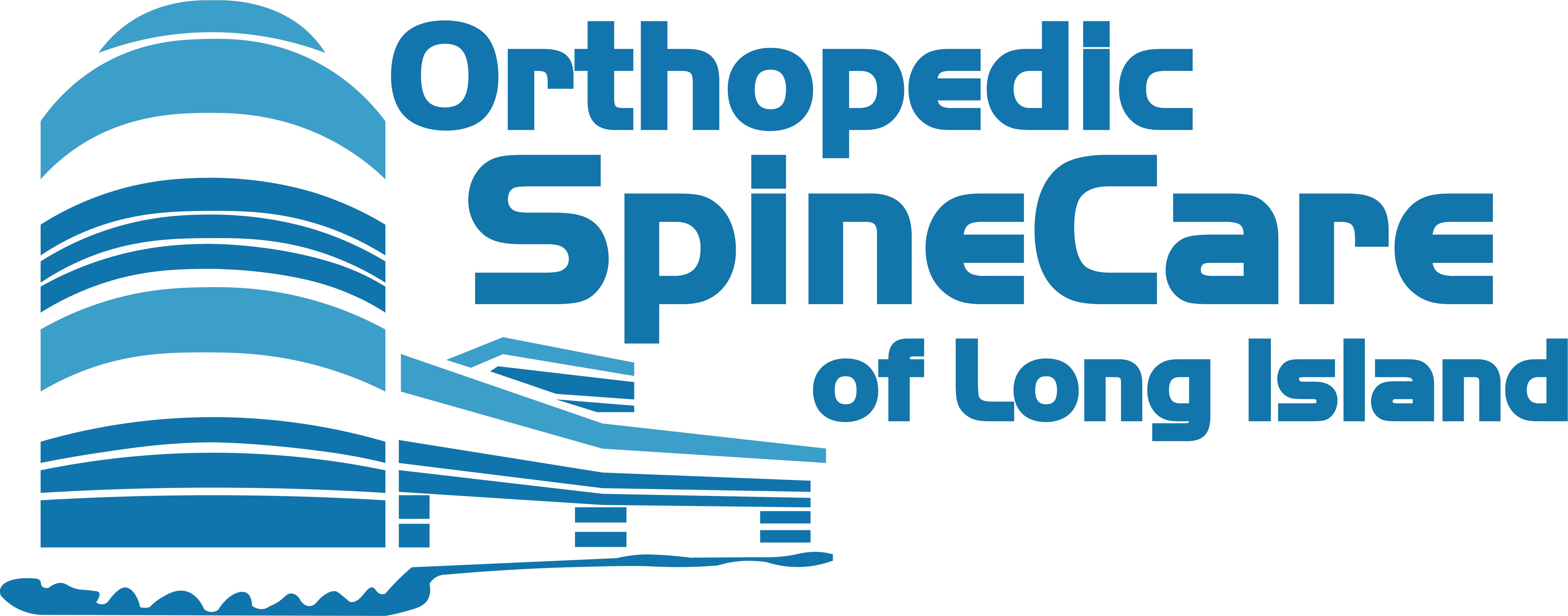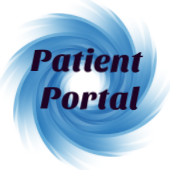Long Island Pain Management Doctor in Suffolk County
Comprehensive Care You Can Trust. Staff You Can Count On.

Orthopedic Spine Care of Long Island was established in 1999 to provide comprehensive care to patients with back and neck disorders covering the entire Long Island area. Many disorders are treated with nonoperative and minimally invasive pain management approaches; but when indicated, surgical intervention is available.
Minimally invasive surgery or major reconstructive surgery is performed depending on the specific problem. All care is tailored to the patient’s specific needs. In addition, Waqaas A. Quraishi, MD, a pain management doctor in Suffolk County is on staff providing interventional pain medicine.
This center provides excellent care by virtue of possessing the latest in modern radiographic technology including X-Ray, MRI, and CT Scan and performing the most up-to-date procedures during surgical intervention. We are able to maintain high standards of excellence by providing community service through education and personal leadership.
Waqaas A. Quraishi, MD
Pain Management Doctor in Suffolk County
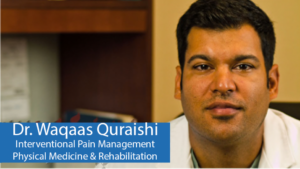
Interventional Pain Medicine
Board Certified Pain, Physical Medicine & Rehabilitation
After an internship in General Surgery at North Shore University Hospital/Long Island Jewish Medical Center, Dr. Quraishi completed a residency in Physical Medicine and Rehabilitation at Long Island Jewish Medical Center (LIJ). He was elected and served as Academic Chief Resident. During his residency, he had several publications and received a number of awards, including a scholarship through the American Pain Society. He also served on the Resident Physician Council of the American Academy of Physical Medicine and Rehabilitation.
Dr. Quraishi completed a prestigious fellowship in Interventional Pain Medicine at the world-renowned Department of Pain Medicine and Palliative Care at Beth Israel Medical Center in New York City. Here, he not only learned the latest interventional techniques in managing pain, but he also received training in the medical management of complex pain conditions syndromes including severe neuropathic pain, Complex Regional Pain Syndrome, Fibromyalgia, and Post-laminectomy syndrome.
He also trained extensively and has a special interest in intrathecal medication therapies and neuromodulation (i.e. spinal cord stimulation).
He is an active member of the American Pain Society, North American Spine Society, and American Academy of Physical Medicine and Rehabilitation. He is also still involved with the Physical Medicine and Rehabilitation department at LIJ and enjoys lecturing/teaching the residents.
Education
Undergraduate Degree
BS, Biology
Miami, Florida
Medical Degree
Ross University School of Medicine
General Surgery Internship
North Shore University Hospital/Long Island Jewish Medical Center
Residency
Orthopedic Residency
Physical Medicine and Rehabilitation at Long Island Jewish Medical Center (LIJ)
Fellowship
Interventional Pain Medicine Fellowship
Dep. of Pain Medicine and Palliative Care at Beth Israel Medical Center
New York, New York
Certification
Board Certified, Physical Medicine and Rehabilitation
Board Certified, Pain Medicine
Societies & Associations
Professional Societies
Eastern Orthopaedic Association
Professional Associations
American Academy of Physical Medicine and Rehabilitation
Below is our full list of services:
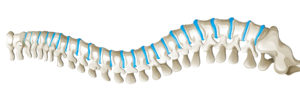
Many different spinal issues can impact day-to-day quality of life. The spine is an extremely important neural pathway in your body, and any issue affecting it can affect other parts of your body, causing pain issues or nerve issues. At Orthopedic Spine Care, we specialize in diagnosing and treating a variety of spinal issues that may be impacting your life. Your spinal health is as important to us as it is to you.
Our treatments can aid a wide range of problems and conditions of the spine, from degenerative issues and chronic conditions such as arthritis and spinal stenosis, to more acute problems, such as herniated discs and pinched nerve blocks radiofrequency ablation. Spine conditions are serious and should be treated with care and caution. Regardless of whatever spinal issues may be ailing you, we will work with you to diagnose and treat your condition to produce the best possible recovery outcomes for you. Nobody knows the ins and outs of spinal issues better than the team at Orthopedic Spine Care of Long Island. Whether you are looking for a spine surgeon or a pain management including a doctor in Suffolk County, contact us today to start improving and treating your condition. You deserve a better, healthier life.

Spinal issues can be treated in a variety of ways, with many treatments being non-invasive or only minorly invasive. However, in certain situations, conditions can become serious or debilitating enough that the best answer is spinal surgery. Even our surgical treatment options at Orthopedic Spine Care of Long Island range from pain management to minimally invasive procedures to major surgery. We understand that surgery can be a scary and intimidating decision, and we do not take it lightly when considering surgical treatments. We offer many modern, proven procedures that can help improve both the symptoms and causes of many conditions, from scoliosis correction to discectomy to options like disc replacements or revision surgeries. We will work with you to assess risks and determine the best, safest treatment possible to achieve your desired recovery results.
Pain Management Doctor in Suffolk County

Pain, whether chronic or acute, can be anything from a minor nuisance to a major debilitating condition. Determining the root causes of pain can be difficult, but it is a necessary step in order to start proper treatment and begin improving quality of life. Here at Orthopedic Spine Care of Long Island, our pain management doctor in Suffolk County,Waqaas A. Quraishi, MD has the tools, experience, and commitment to help you understand the cause of your pain, determine the proper course of action for treatment, and begin living a better, happier, more pain-free life. Our clinic has a comprehensive, state-of-the-art array of treatments that can assist you in leading a life free of debilitating or even irritating pain.
We here at Orthopedic Spine Care of Long Island offer several powerful treatments that can help manage and reduce your pain, even if that pain does not necessarily occur in your spine. We utilize injection therapy to treat joint pain, including in the knees, shoulders, ankles, and hips. Injections can also be used to treat nerve pain, such as Carpal or even Cubital Tunnel Syndrome. Injections can even be used to block nerves that are causing pain in specific regions of the body. With our pain management resources and experience, our team will help reduce your pain so you can live your life to the fullest. If you are looking for a pain management doctor in Suffolk County, contact us today!
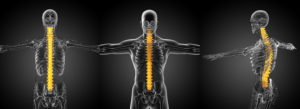
At Orthopedic Spine Care of Long Island, we provide a wide range of in-depth radiological examinations. Radiology is the branch of medical science that specifically utilizes various forms of high radiant energy to properly diagnose and treat a range of diseases. X-rays, CT scans, and MRIs are just some of the more common radiological tests that make up this highly beneficial and advanced field of medical care.
X-ray
This type of testing uses electromagnetic waves to create internal pictures of the body. Since different parts of the body absorb different amounts of radiation, x-rays will come off as black and white. The calcium in bones absorb the higher amounts of radiation, and show up white while soft tissue and organs appear dark grey. Because of this, x-rays are most commonly used to screen broken bones. However, the procedure still has the ability to spot other, more serious conditions such as pneumonia or breast cancer in the chest. X-rays can also help doctors investigate:
- Diagnose a bone fracture
- Diagnose a joint dislocation
- Provide guidance for orthopedic surgeries including fracture reductions, joint replacement, and spinal repair and spinal fusions
- Diagnose injury, arthritis, abnormal bone growth, or infection
- Locate any foreign objects
- Detect bone cancers
- Monitor proper healing and stabilization of bone fractures
- Epidural steroid injections
Fluoroscopy is a special variant of x-ray imaging that focuses on capturing an internal portion of the body in motion. Put in simpler terms, this “X-ray movie” is made possible by projecting a continuous x-ray beam through the patient. In some cases, the patient will ingest a liquid compound that absorbs x-rays- making it visible on screen- to simulate movement throughout the digestive tract. Everything the fluoroscopy captures is transmitted to a monitor in real time. From there, a radiologist will then assess the data.
CT Scan
Also known as a computerized tomography scan, this imaging technique compiles x-ray results taken from numerous angles to develop cross-sectional views of internal structures such as bones, blood vessels, and soft tissue. Since CT scans offer a more detailed report than x-rays, they’re used for more high-priority examinations. CT scans can pinpoint and detect:
- Muscle and bone disorders
- Tumors
- Blood clots
- Heart disease
- Internal bleeding
- Aside from diagnosing, CT scans can also analyze the effectiveness of ongoing treatment plan and procedures for diseases such as cancer.
MRI
When previous scans fail to provide a healthcare provider with a complete picture, an MRI is usually scheduled as a reasonable follow up. MRI stands for Magnetic Resonance Imaging. Its name comes from using a magnetic field in conjunction with pulses of radio waves to develop highly detailed illustrations of the body’s internals that other imaging methods struggle with. The magnetic field and radio waves help produce clearer pictures and provide a more dramatic contrast between normal and abnormal tissue structures, making it easier for an expert to diagnose. Because of this, MRIs are mostly recommended when dealing with vital complications in the brain, spine, neck, and chest.
Spine Care in Huntington Station

Are you living in the Huntington Station area and experiencing spine, neck or back pain? Here at Orthopedic Spine Care of Long Island our experienced surgeons and pain management doctor in Suffolk County provide comprehensive care to patients with back and neck disorders covering the entire Long Island area.
To understand the importance of spinal health, you must first understand the two major functions of the spine. It serves to keep the body upright and balanced and also protects the central nervous system. The central nervous system is able to facilitate communication between the body and the brain at an efficient rate when the spinal column is in proper alignment.
Your spine is arguably one of your most important body parts if it is injured your mobility is limited. A damaged spinal cord can disrupt neural responses from the nervous system that allows us to feel sensations, in result, disabling these sensations in parts of your body.
There are many causes of spinal problems, some factors include:
- Poor biomechanics
- Poor posture
- Poor mobility in the muscles around the spine
- Muscle weakness or imbalance
- A sedentary lifestyle
There are also many ways to take care of your spine and prevent spinal injury. You can practice these in your everyday life. Some include:
- Making exercise a lifestyle
- Engaging in mindful meditation
- Re-evaluating your sitting posture
- Going for a walk to help support your spine
- Using heat therapy to soothe your pain
- Maintaining good nutrition
- Exercising in the water
- Lifting correctly
- Massage therapy
Even if you take great care of your spine and body, you may still experience neck, acute and chronic pain. We understand how important spine care is, and how injuries can greatly impact your quality of life. Whether you are looking for a spine surgeon or a pain management doctor in Suffolk County, contact us today to start improving and treating your condition. If you have any questions about spine care or want to set up an appointment contact us today at 631-847-0200.
The Aging Spine: Conditions And Treatment
- Spinal stenosis
- Degenerative spondylolisthesis
- Adult scoliosis
Spinal Stenosis
Spinal Stenosis is the literal thinning/narrowing of the spaces within your spine, thus putting pressure on the nerves that run through the spine. This disorder typically will occur in both the neck and lower back areas.
Symptoms of Spinal Stenosis: In most cases, people don’t have any symptoms of spinal stenosis. The disorder progressively gets worse over time, which could lead to symptoms appearing. Spinal stenosis is usually initially identified through an MRI or a CT scan, but symptoms can potentially occur. The following are potential symptoms that can be found in the neck area (cervical spine):
- Numbness in a hand, arm, leg, or foot.
- Weakness in these areas as well
- Issues with walking upright/balance
- Neck pain
Potential Risks: If left untreated, there is the risk of permanent damage that can occur in the spine through spinal stenosis. These risks can include the following:
- Numbness
- Weakness
- Balance problems
- Incontinence
- Paralysis
Degenerative Spondylolisthesis
Degenerative spondylolisthesis is diagnosed when one vertebra slips forward over the one that’s below it. The disease is more common in adults who are over age 50, with a significant jump in those who are over age 65. In most cases, it occurs in the lower levels of the spine.
The symptoms of degenerative spondylolisthesis are actually similar to the ones found in spinal stenosis. It also follows a similar path to stenosis, in that it gradually becomes more severe over time. The symptoms that come from degenerative spondylolisthesis include the following:
- Leg pain
- Sciatic pain (aching in one or both legs)
- Pseudoclaudication (tired feeling in the legs, usually after standing for a long period of time)
- Pain when standing upright
- Difficulty arching forward
- Decreased flexibility in the lower back
- Tight hamstring muscles
Potential risks: One of the dangers that can occur from degenerative spondylolisthesis is the patient developing cauda equina syndrome. This syndrome causes progressive nerve root damage and a loss of bladder/bowel control. This would be an extremely rare occurrence, but in the event that it does happen then you need to pursue immediate medical attention. The risks for spinal stenosis are also similar to this disorder as well.
Adult Scoliosis

Although more common in children, scoliosis can also occur in people who are over the age of 18 already. Scoliosis, in general, is defined as the curving of the spine by at least a 10-degree amount. Adult scoliosis goes through two different phases, adult idiopathic scoliosis, and adult “de novo” or degenerative scoliosis. The former occurs during childhood while the latter develops during adulthood.
Symptoms
The causes for scoliosis are not very well known at this time. But identifying the disease can be made easy by physicians. Some of the symptoms of scoliosis go as follows:
- Large curves that can lead to back pain
- Occasional shortness of breath
- Nerve irritation
- Leg pain and possible weakness as well
Potential Risks
Adult scoliosis gradually degenerates with age, potentially reaching a curvature of roughly 30 or 40 degrees. This deformity can then lead to a hump or prominence in the area of the spine that is involved. However, it is rare for paralysis or neurological damages to occur in the spine from scoliosis. The degeneration of the discs can also lead to poor posture and an inability to stand upright.
Whether you are looking for a spine surgeon or a pain management doctor in Suffolk County, contact us today to start improving and treating your condition. , Contact Orthopedic Spine Care of Long Island in Huntington today!
